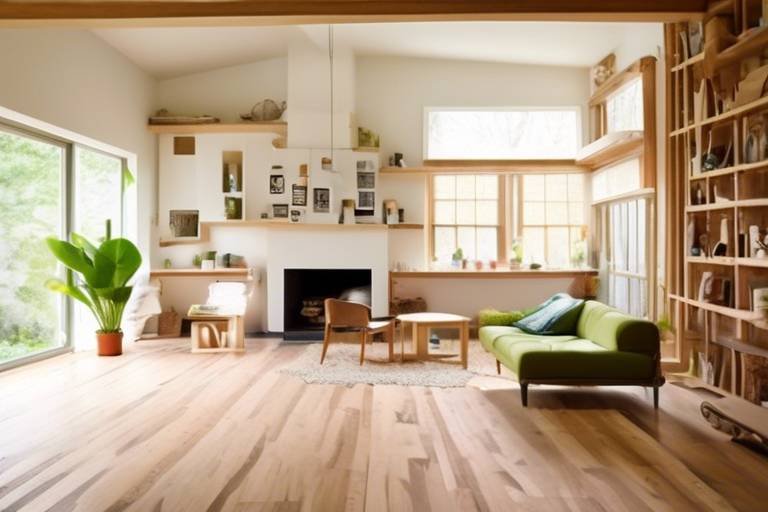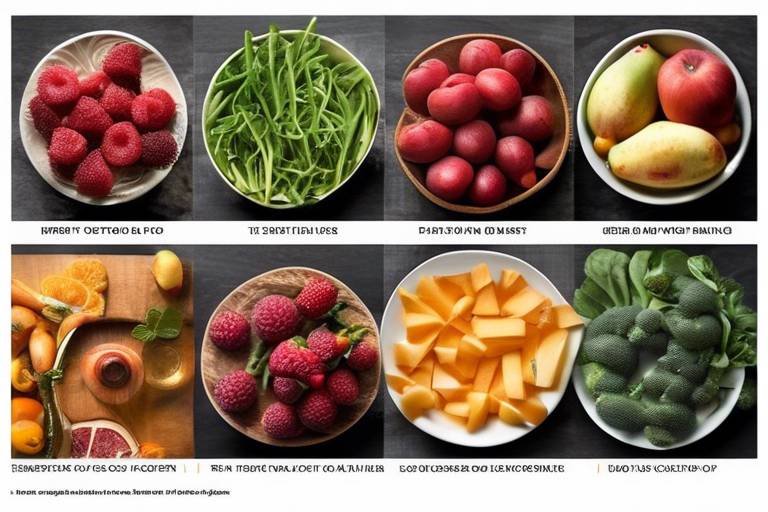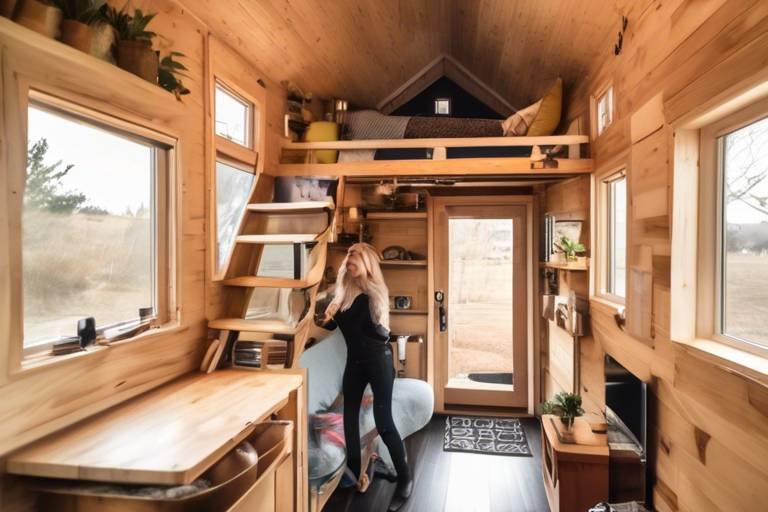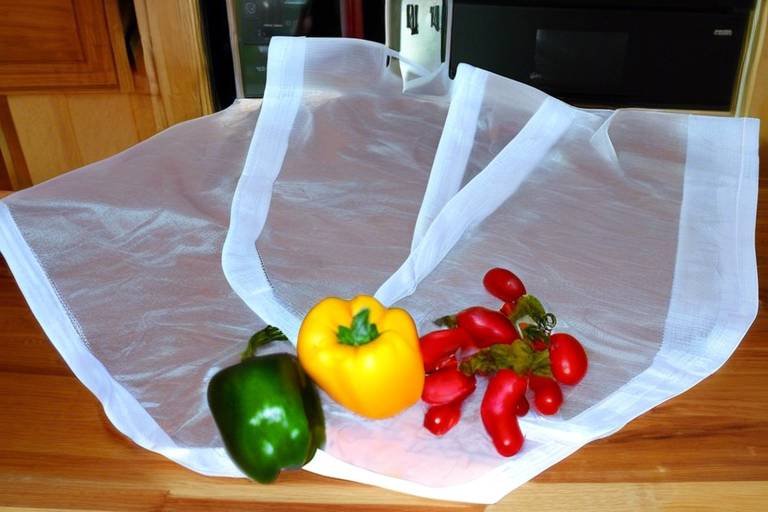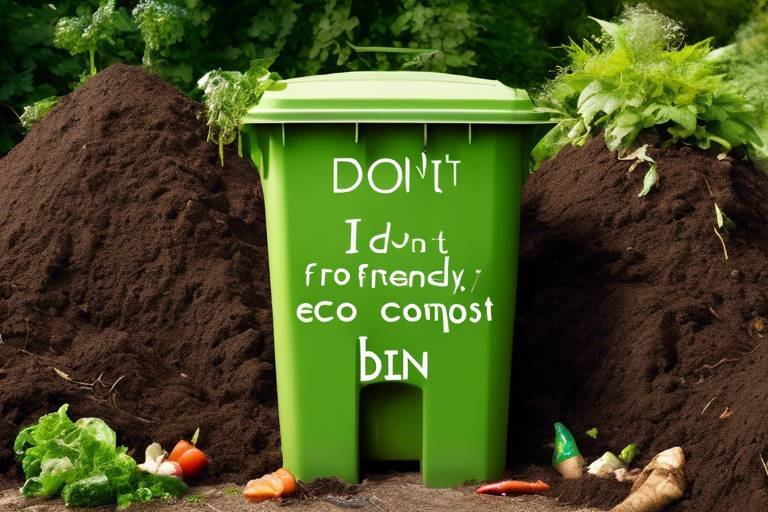10 Ways to Engage in Eco-Friendly Home Renovation
Are you looking to transform your home into a sustainable oasis while reducing your carbon footprint? Embarking on an eco-friendly home renovation journey can not only benefit the environment but also enhance the comfort and efficiency of your living space. By incorporating environmentally conscious practices and materials, you can create a home that is both stylish and sustainable. Let's explore ten innovative ways to engage in eco-friendly home renovation that will leave a positive impact on the planet.
First and foremost, consider upgrading to energy-efficient lighting. By switching to LED bulbs and incorporating motion sensors, you can significantly reduce energy consumption and lower your electricity bills. Not only do LED bulbs last longer than traditional incandescent bulbs, but they also emit less heat, making them an eco-friendly choice for illuminating your home.
When it comes to water conservation, implementing low-flow fixtures, rainwater harvesting systems, and greywater recycling can help minimize water wastage. These strategies not only reduce your water usage but also contribute to preserving this precious resource for future generations.
Opting for recycled and sustainable materials in your renovation project is another impactful way to go green. Consider using reclaimed wood, bamboo flooring, recycled glass countertops, and other eco-friendly building materials to reduce the demand for new resources and minimize waste.
Investing in Energy Star-rated appliances is a smart choice to save energy and reduce greenhouse gas emissions. These energy-efficient appliances not only lower your utility bills but also contribute to a healthier environment by decreasing your carbon footprint.
Harness the power of the sun by installing solar panels on your roof. Solar panel installation allows you to generate clean, renewable energy to power your home, reducing your reliance on fossil fuels and decreasing your overall energy costs.
Proper insulation is key to improving energy efficiency and reducing the need for excessive heating and cooling. By ensuring your home is well-insulated, you can create a more comfortable living environment while minimizing energy waste.
Setting up a composting system in your yard is a great way to reduce food waste and create nutrient-rich soil for your garden. Composting not only diverts organic waste from landfills but also enriches your soil naturally, promoting healthy plant growth.
Consider incorporating a green roof or living wall into your renovation plans. These innovative features not only enhance the aesthetic appeal of your home but also improve insulation, reduce stormwater runoff, and enhance air quality by absorbing carbon dioxide and releasing oxygen.
Embrace smart home technology to optimize your energy usage and reduce waste. By integrating smart thermostats, automated lighting, and energy monitoring systems, you can efficiently manage your home's energy consumption and create a more sustainable living environment.
By following these ten ways to engage in eco-friendly home renovation, you can embark on a journey towards creating a more sustainable and environmentally conscious living space. Let your home be a testament to your commitment to preserving the planet for future generations while enjoying the benefits of a greener lifestyle.

Energy-Efficient Lighting
Discover how to make your home renovation project environmentally friendly and sustainable with these ten practical tips.
When it comes to creating an eco-friendly home, lighting plays a crucial role in both energy efficiency and cost savings. By upgrading to LED bulbs and incorporating motion sensors into your lighting system, you can significantly reduce energy consumption and lower your electricity bills. LED bulbs are not only long-lasting but also consume much less energy compared to traditional incandescent bulbs. The motion sensors ensure that lights are only activated when needed, preventing unnecessary energy wastage.
Additionally, consider utilizing natural light by strategically placing windows and skylights to reduce the need for artificial lighting during the day. This not only saves energy but also creates a more pleasant and inviting atmosphere in your home.
Furthermore, organizing your lighting fixtures in zones and using dimmer switches can help you customize the lighting levels according to your needs, further optimizing energy usage. By implementing these energy-efficient lighting strategies, you can make a significant impact on both the environment and your wallet.
Remember, small changes in your lighting choices can lead to substantial energy savings in the long run, making your home renovation project not only eco-friendly but also cost-effective.

Water Conservation Strategies
Discover how to make your home renovation project environmentally friendly and sustainable with these ten practical tips.
When it comes to eco-friendly home renovation, water conservation plays a crucial role in reducing your environmental impact. By implementing smart water-saving strategies, you can minimize water wastage and contribute to a more sustainable future.
One effective water conservation strategy is to install low-flow fixtures in your home. These fixtures are designed to reduce water usage without compromising on performance. By switching to low-flow toilets, showerheads, and faucets, you can significantly decrease your water consumption and lower your utility bills.
Another eco-friendly approach is to incorporate rainwater harvesting systems into your home design. These systems collect rainwater from your roof and store it for later use in activities like watering your garden or flushing toilets. By utilizing rainwater, you can reduce your reliance on municipal water sources and conserve this precious resource.
Additionally, implementing a greywater recycling system can further enhance your water conservation efforts. Greywater refers to gently used water from sources like sinks, showers, and laundry machines. By treating and reusing this water for tasks that don't require potable water, such as irrigation or toilet flushing, you can significantly reduce your overall water consumption.
Combining these water conservation strategies with other eco-friendly renovation practices can help you create a sustainable and efficient home that benefits both the environment and your wallet.

Recycled and Sustainable Materials
When it comes to eco-friendly home renovation, choosing is a key factor in reducing environmental impact and promoting sustainability. By opting for materials that have been repurposed or are sourced from renewable resources, you can contribute to a greener future for our planet.
One popular choice for eco-conscious homeowners is reclaimed wood. This type of wood is salvaged from old buildings, barns, or other structures, giving it a unique character while also reducing the demand for new timber. Using reclaimed wood in your renovation projects not only adds a touch of history and charm to your home but also helps preserve forests and reduce deforestation.
Another sustainable option to consider is bamboo flooring. Bamboo is a fast-growing grass that can be harvested sustainably without causing harm to the environment. It is a durable and versatile material that can be used for flooring, furniture, and other home decor elements. Choosing bamboo flooring over traditional hardwood helps conserve forests and promotes the use of renewable resources.
When it comes to countertops, recycled glass is a stylish and eco-friendly choice. Recycled glass countertops are made from crushed glass that is mixed with resin or cement to create a durable and attractive surface. By using recycled glass in your kitchen or bathroom, you can divert glass waste from landfills and give it a new life in your home.
Additionally, incorporating other eco-friendly building materials such as recycled metal, cork flooring, or natural stone can further enhance the sustainability of your home renovation project. These materials are not only environmentally friendly but also often contribute to a healthier indoor environment by reducing the use of harmful chemicals and toxins.
By selecting for your home renovation, you are not only making a positive impact on the environment but also creating a more eco-friendly and healthy living space for you and your family.
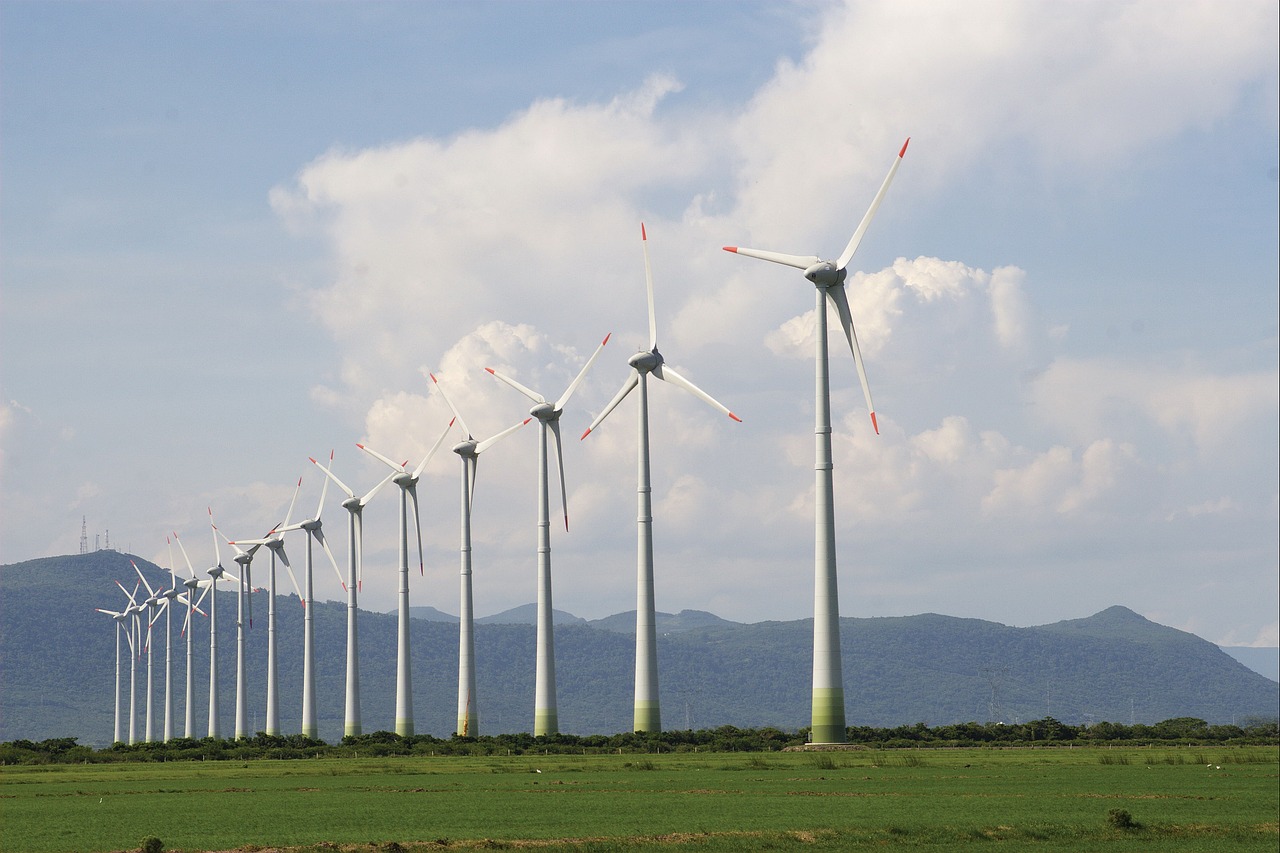
Energy-Efficient Appliances
When it comes to creating an eco-friendly home, upgrading to is a crucial step in reducing both energy consumption and greenhouse gas emissions. By investing in Energy Star-rated appliances, you not only save on your energy bills but also contribute to a healthier environment.
Energy-efficient appliances are designed to use less energy while still providing the same level of performance. From refrigerators and dishwashers to washing machines and air conditioners, these appliances are equipped with advanced technology that maximizes energy efficiency.
Switching to energy-efficient appliances can significantly reduce your carbon footprint and help combat climate change. By choosing appliances with high energy efficiency ratings, you can make a positive impact on the environment without sacrificing functionality or convenience.
Moreover, energy-efficient appliances often come with innovative features that enhance user experience and promote sustainable living. For example, some appliances have built-in energy-saving modes, programmable settings, and smart capabilities that allow you to optimize energy usage based on your needs.
When shopping for energy-efficient appliances, look for the Energy Star label, which indicates that the product meets strict energy efficiency guidelines set by the Environmental Protection Agency (EPA). These appliances are not only better for the environment but also for your wallet in the long run.
By making the switch to energy-efficient appliances, you take a significant step towards creating a more sustainable home and reducing your overall environmental impact. With advancements in technology and a growing emphasis on energy conservation, choosing eco-friendly appliances is a smart and responsible choice for both your household and the planet.
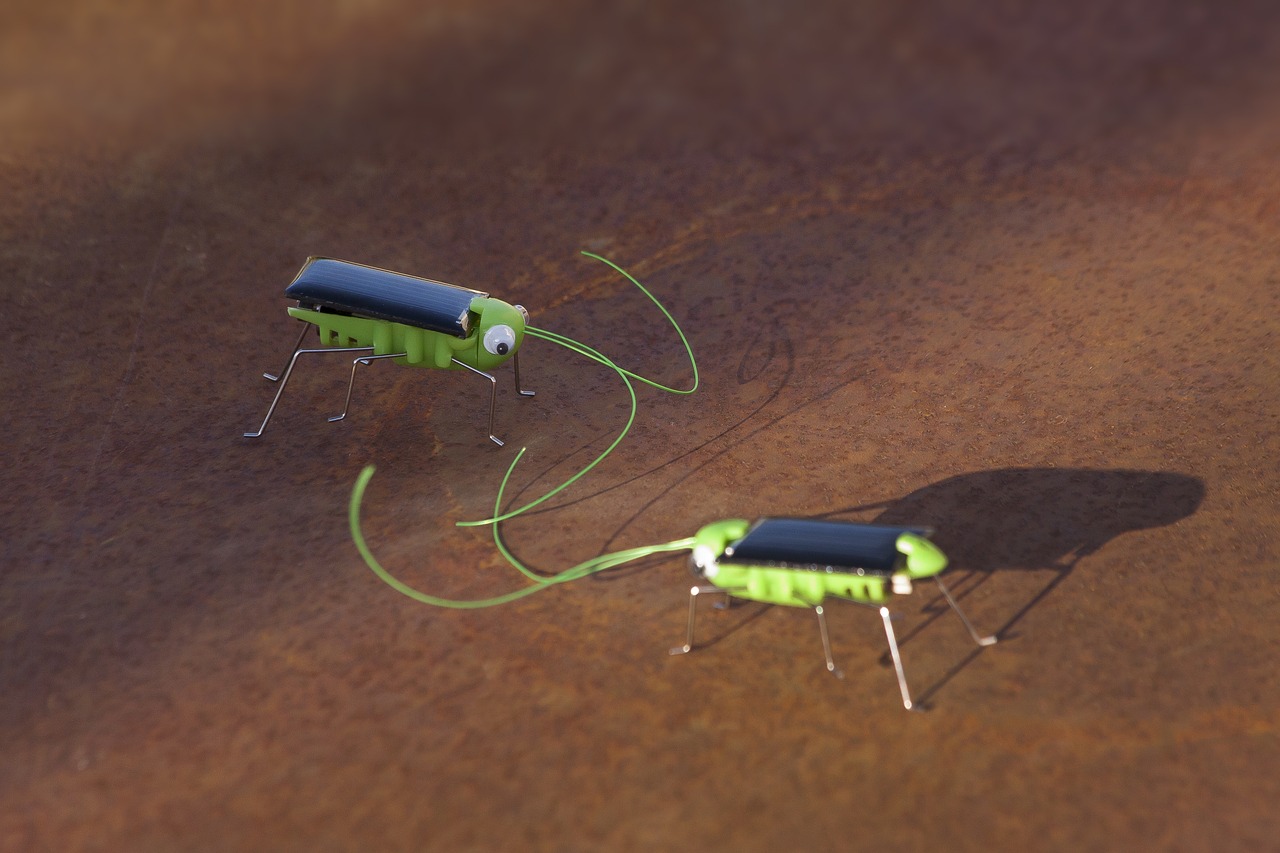
Solar Panel Installation
When it comes to making your home renovation project eco-friendly and sustainable, one of the most impactful steps you can take is . By harnessing the power of the sun, you can generate clean, renewable energy to power your home while reducing your carbon footprint.
Solar panels work by converting sunlight into electricity through photovoltaic cells. These cells are typically mounted on the roof of a building to capture the maximum amount of sunlight throughout the day. The electricity generated can then be used to power your home's appliances, lighting, and other electrical devices.
One of the key benefits of solar panel installation is the potential for significant cost savings on your electricity bills. By generating your own electricity, you can reduce your reliance on the grid and lower your monthly energy expenses. Additionally, many governments and local authorities offer incentives and rebates for installing solar panels, making it a financially attractive investment.
Moreover, solar panels are environmentally friendly, producing clean energy without emitting harmful greenhouse gases. By choosing solar power, you are contributing to the fight against climate change and helping to create a more sustainable future for generations to come.
It's important to consider the orientation and tilt of your roof when installing solar panels to ensure maximum sunlight exposure. Additionally, regular maintenance and cleaning of the panels are essential to optimize their efficiency and longevity.
Overall, solar panel installation is a powerful way to reduce your carbon footprint, lower your energy costs, and contribute to a greener planet. With advancements in technology and increasing affordability, now is a great time to consider making the switch to solar energy for your home.
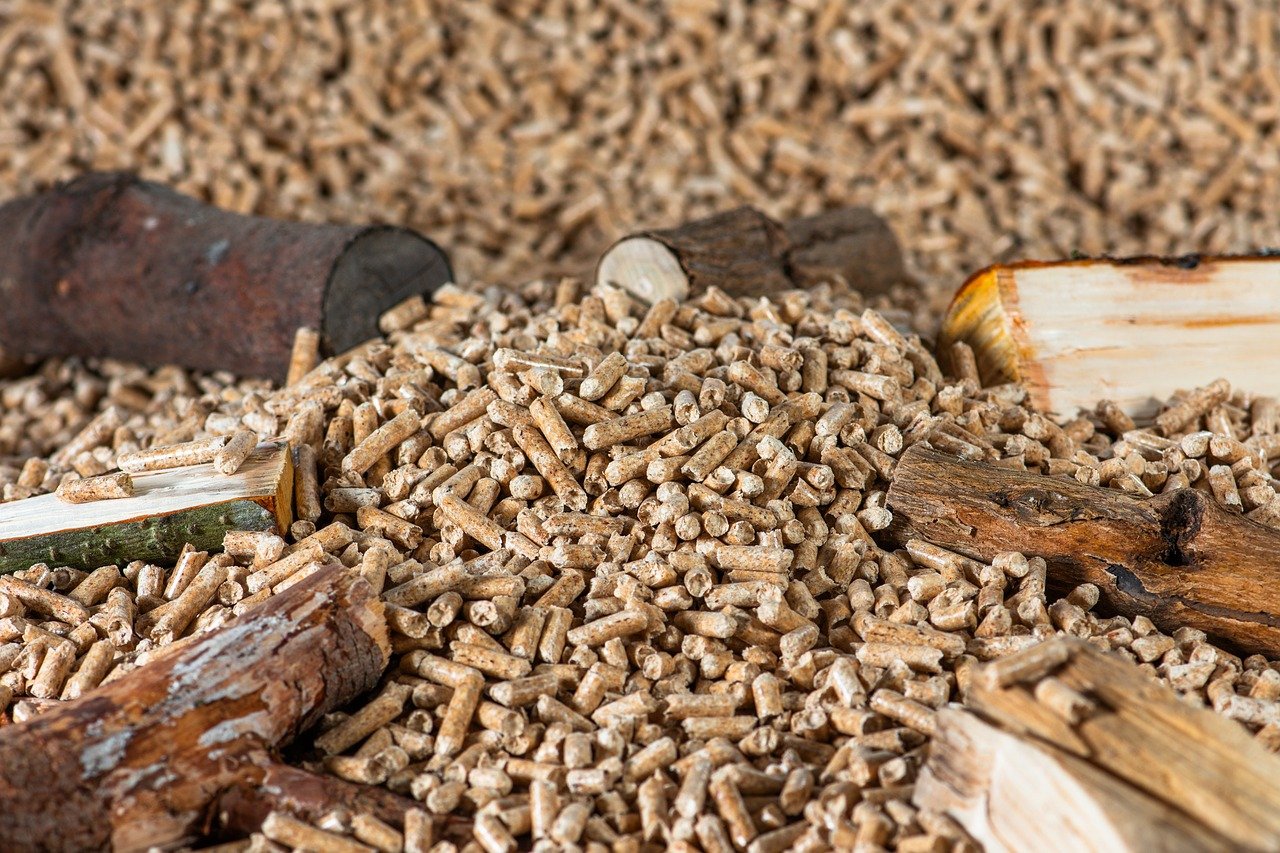
Proper Insulation
Discover how to make your home renovation project environmentally friendly and sustainable with these ten practical tips.
Proper insulation is like wrapping your home in a cozy blanket, keeping the warmth inside during winter and the heat out during summer. It's a crucial element in ensuring energy efficiency and reducing your carbon footprint. By sealing gaps, adding insulation to walls, floors, and attics, you can significantly cut down on energy loss, making your home more comfortable and environmentally friendly.

Composting System
Discover how to make your home renovation project environmentally friendly and sustainable with these ten practical tips.
When it comes to eco-friendly practices in home renovation, setting up a composting system can significantly reduce food waste and benefit your garden. Composting is a natural process that transforms organic waste into nutrient-rich soil, which can be used to nourish plants and improve soil quality.
By composting kitchen scraps, yard waste, and other organic materials, you not only divert waste from landfills but also create a sustainable source of fertilizer for your garden. This closed-loop system reduces the need for chemical fertilizers, promotes healthy soil biodiversity, and helps retain moisture in the soil.
Setting up a composting system is relatively easy and can be done using a compost bin or pile in your yard. By layering green (nitrogen-rich) and brown (carbon-rich) materials, you can create the ideal environment for microorganisms to break down the organic matter into compost.
In addition to reducing waste and improving soil health, composting also helps reduce greenhouse gas emissions by preventing organic matter from decomposing anaerobically in landfills. It is a simple yet effective way to contribute to a more sustainable and eco-friendly home environment.
If you have any questions about eco-friendly home renovation or implementing sustainable practices in your home, check out these frequently asked questions:
- Q: How can I make my home more energy-efficient?
- A: You can make your home more energy-efficient by upgrading to energy-efficient appliances, improving insulation, and incorporating smart home technology.
- Q: What are some eco-friendly building materials I can use?
- A: You can use recycled materials, reclaimed wood, bamboo flooring, and other sustainable options for your home renovation projects.
- Q: How can I reduce water wastage in my home?
- A: You can implement water-saving fixtures, rainwater harvesting systems, and greywater recycling to minimize water wastage.

Green Roof or Living Wall
Discover how to make your home renovation project environmentally friendly and sustainable with these ten practical tips.
When it comes to eco-friendly home renovations, incorporating a green roof or living wall can significantly enhance the sustainability of your living space. Imagine having a lush garden on your rooftop or a vertical garden on your wall, not only adding a touch of nature but also providing numerous benefits to the environment and your home.
Green roofs are like natural insulators, keeping your home cool in the summer and warm in the winter, reducing the need for excessive heating and cooling. They also help in reducing stormwater runoff by absorbing rainwater, which can be particularly beneficial in urban areas with limited green spaces.
On the other hand, living walls are not only aesthetically pleasing but also contribute to improving air quality by absorbing pollutants and releasing oxygen. They act as natural air purifiers, creating a healthier indoor environment for you and your family.
By incorporating a green roof or living wall into your home renovation project, you are not only adding a unique and beautiful feature to your living space but also actively contributing to a greener and more sustainable future.

Smart Home Technology
Discover how to make your home renovation project environmentally friendly and sustainable with these ten practical tips.
When it comes to creating an eco-friendly home, integrating smart home technology can make a significant impact on your energy consumption and overall sustainability. Smart thermostats, for example, allow you to regulate your home's temperature more efficiently, reducing energy waste. By programming your thermostat to adjust based on your schedule, you can ensure that you are not heating or cooling your home when it's unnecessary.
Automated lighting systems can also contribute to energy savings by turning off lights in unoccupied rooms or adjusting brightness levels based on natural light availability. This not only reduces electricity usage but also extends the lifespan of your light bulbs.
Additionally, energy monitoring systems provide real-time insights into your energy usage, allowing you to identify areas where you can further optimize consumption. By tracking your energy usage patterns, you can make informed decisions on how to reduce waste and enhance efficiency throughout your home.
If you have any questions or concerns about implementing eco-friendly practices in your home renovation project, check out these frequently asked questions:
- How can I determine the energy efficiency of appliances?
- What are the benefits of using recycled materials in home renovation?
- How can I make my home more energy-efficient without major renovations?
When selecting new appliances, look for the Energy Star label, which indicates that the product meets specific energy efficiency criteria set by the Environmental Protection Agency (EPA). Energy Star-rated appliances are designed to consume less energy while delivering optimal performance.
Using recycled materials not only reduces the demand for new resources but also minimizes waste that would otherwise end up in landfills. By incorporating recycled materials into your renovation project, you are promoting sustainability and supporting the circular economy.
Simple steps such as sealing drafts, upgrading insulation, and installing energy-efficient lighting can significantly improve your home's energy efficiency without the need for extensive renovations. These small changes can lead to long-term energy savings and environmental benefits.
Frequently Asked Questions
- What are the benefits of using energy-efficient lighting in a home renovation?
Energy-efficient lighting, such as LED bulbs, can help reduce energy consumption, lower electricity bills, and have a longer lifespan compared to traditional incandescent bulbs. Additionally, installing motion sensors can further optimize energy usage by automatically turning off lights when not needed.
- How can water conservation strategies be incorporated into a home renovation project?
Water conservation strategies like implementing low-flow fixtures, rainwater harvesting systems, and greywater recycling can significantly reduce water wastage in a home. By using these methods, homeowners can contribute to water conservation efforts and lower their water bills.
- What are the advantages of using recycled and sustainable materials in home renovation?
Opting for reclaimed wood, bamboo flooring, recycled glass countertops, and other eco-friendly building materials not only reduces the demand for new resources but also helps lower the environmental impact of the renovation project. These materials often have unique textures and designs, adding character to the home.
- How do energy-efficient appliances contribute to a sustainable home renovation?
Energy Star-rated appliances are designed to consume less energy, which helps save on electricity costs and reduce greenhouse gas emissions. By investing in these appliances, homeowners can make their homes more energy-efficient and environmentally friendly.
- What are the key benefits of installing solar panels during a home renovation?
Solar panels harness the sun's energy to generate clean, renewable electricity, reducing reliance on fossil fuels and lowering carbon emissions. They can also potentially decrease electricity bills over time and increase the home's value.

